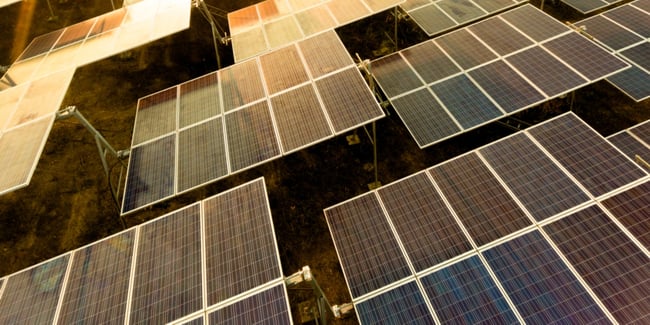How to Finance Building Energy Performance Upgrades

The business case for energy efficiency measures and renewable generation is often favorable. This is especially true in places like New York and New Jersey, once you factor in the high cost of electricity and gas. However, the main barrier for many of these projects is the upfront cost; although the long-term benefit is greater, the short-term impact on cash flow can be significant.
Even if a company has the capital for energy efficiency and renewable generation projects, there is an opportunity cost - company owners and managers may prefer to reinvest these funds in their business to get additional profit. Fortunately, there are many alternatives that make building upgrades easier to afford. The following are some examples:
- Getting a loan with favorable terms and using the savings achieved to pay it off.
- Taking advantage of tax incentives for energy efficiency and renewable generation.
- Rebate programs from utility companies or from the government.
- Power purchase agreements (PPA), in the case of renewable generation.
The availability of these benefits may vary by location or by type of project. Also, keep in mind that not all projects provide the same return for each dollar spent upfront; before proceeding with building upgrades, identify the most promising projects through consulting.
Make sure your projects are eligible for rebates and financing.
Financing Building Upgrade Projects with Low-Interest Loans
You can use the bank’s money for energy efficiency measures and renewable generation systems, and then pay off the loan with the savings achieved. However, you need favorable loan terms to make this approach feasible:
- If project savings are higher than debt service, the project can pay for itself and still leave net savings in your pocket, starting from the first month of operation.
- If debt service is higher, you will still have to assume part of the project cost, but the net cost will still be less than if you had paid up front.
Loan financing involves giving up part of the project’s savings to cover interest, but in exchange, you get the upgrade at zero upfront cost. Financial analysis is very important: taking a high-interest loan for a project that offers moderate savings can actually result in losing money. In other words, energy efficiency and renewable energy upgrades are not something you can normally finance with a credit card.
Taking Advantage of Tax Incentives
There are two main types of tax incentives: exemptions and credits. When a certain product or service is not subject to taxes that normally apply, you have a tax exemption. On the other hand, a tax credit is a deduction you can claim from your tax burden. In both cases, cash that would have been spent on taxes stays in your pocket.
Consider the case of solar power, which gets tax benefits both in New York in New Jersey. In both cases, photovoltaic technology gets:
- Sales tax exemption
- Property tax exemption for any increase in property value attributable to solar power.
- Federal tax credit for 30% of the project cost. In the case of New York, there is an additional state tax credit for 25% of the cost, capped at $5,000 per project.
Rebate Programs
Rebates are cash incentives for certain types of projects, which result in a direct cost reduction. Most equipment rebates in New York City come from Con Edison, while the NY State Energy Research & Development Authority (NYSERDA) manages rebate programs for solar and wind power. In the case of New Jersey, most incentives are available through the NJ Clean Energy Program.

Rebates improve the financial performance of building upgrade projects, but the approval procedure can be demanding. After all, the organization managing rebates will want to ensure its funds are used in projects that have a positive impact. To be eligible for rebates, your project must typically meet certain performance metrics, and the equipment used is normally subject to labeling requirements. For example, lighting rebates normally require labeling from programs like ENERGY STAR or DesignLights Consortium (DLC).
Power Purchase Agreements (PPA)
If you install a renewable generation system through a power purchase agreement (PPA), you are not purchasing the equipment itself - instead, you are agreeing to purchase its energy output for a predetermined period of time. The renewable energy system, typically a photovoltaic array or wind turbine, remains under the ownership of the supplier, and they provide maintenance. You get savings from the first month of operation, since the kilowatt-hour price in the PPA is lower than the electricity tariff.
In a PPA, your supplier keeps a portion of the savings as profit, which is factored into the agreed electricity price. However, in return, you get savings at zero upfront cost, and you don’t have to worry about system maintenance.
Although PPAs typically apply to renewable generation systems, a similar concept exists for LED upgrades, called lighting as a service (LaaS). It follows a similar logic as PPAs: your lighting supplier owns and services the installation, and you pay a monthly fee that is lower than the savings achieved.
Concluding Remarks
There are ways to get the benefits of energy efficiency measures and renewable generation systems without a sizable upfront expense. However, having a well-engineered project is important regardless of how you purchase it. In fact, performance requirements may actually be higher for projects developed through loans and incentives, since the organizations providing these benefits will want to ensure their capital is used properly.

Michael Tobias
Michael Tobias, the Founding Principal of NY Engineers, currently leads a team of 150+ MEP/FP engineers and has led over 4,000 projects in the US
Join 15,000+ Fellow Architects and Contractors
Get expert engineering tips straight to your inbox. Subscribe to the NY Engineers Blog below.

